Grand battement à la seconde.
Grip the barre until your knuckles are white! Pull on the barre! Lift your shoulder! Crunch your body! Kick that leg! Bend that supporting knee! Roll in that supporting foot! And, above all, do not point that free foot!

Grand battement à la seconde.
Grip the barre until your knuckles are white! Pull on the barre! Lift your shoulder! Crunch your body! Kick that leg! Bend that supporting knee! Roll in that supporting foot! And, above all, do not point that free foot!

If you teach frequently and demonstrate full out, make sure you change your supporting leg. If you don’t, you will pay for it as you age. Repetitive muscle usage is the curse of the dance teacher. Try not to keep using the same muscles the same way. Find ways to alternate muscle usage and make sure you stretch out those overworked muscles daily so you keep your joints greased and usable and you can continue to do what you love and need to do.
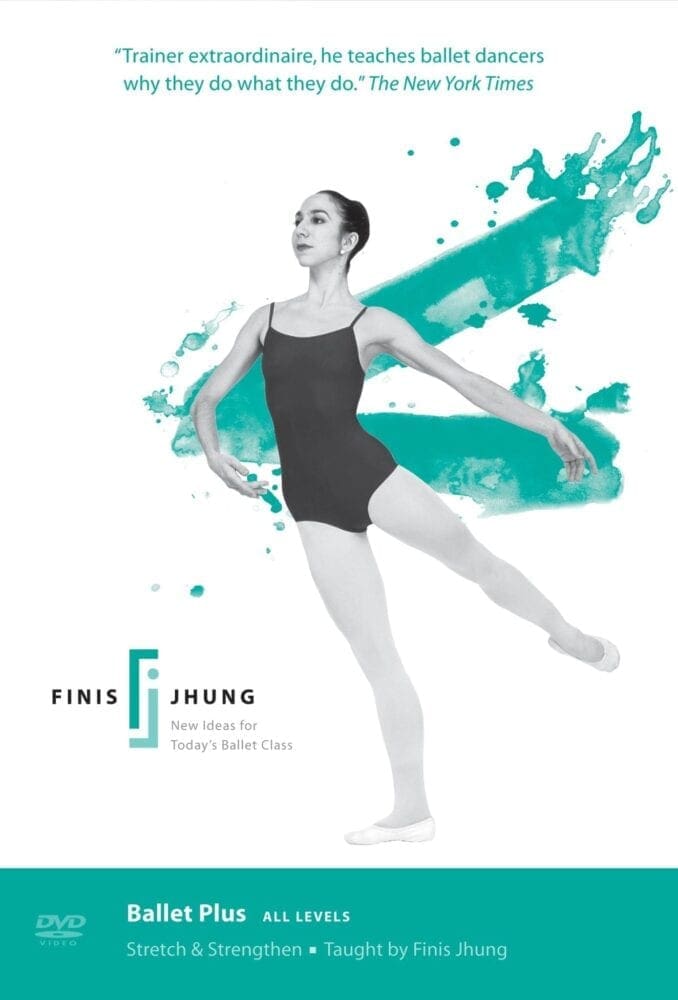
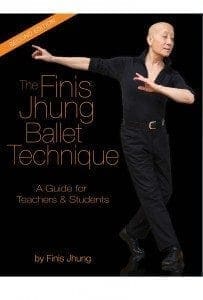 Repeat this entire stretch as often as you wish.
Repeat this entire stretch as often as you wish.
Excerpted from “The Best Stretches” in my book “The Finis Jhung Ballet Technique: A Guide for Teachers & Students.” Demonstrated in my instructional video “Ballet Plus”

Taught my adult absolute beginners tonight at the Ailey Extension to work their feet correctly and strongly: Sliding your foot out: heel, ball, toes press down and push the floor away to the pointe. Sliding your foot in: toes, ball, heel press down and drag the floor to the supporting foot. Your feet like to think and feel the floor

In class today people fell off their pirouettes because they chose to close their arms and turn their bodies instead of using their arms to reach “The End of the Plie”, push down with the supporting knee past the toes, and spot. They kept forgetting they could not turn faster than they could fall.

Your feet are never passive. They either stand, slide, roll to half-toe, or push off the floor. The supporting foot takes your weight and tells you when to move. The free foot leads the free leg to its position. Your feet have brains. Use them
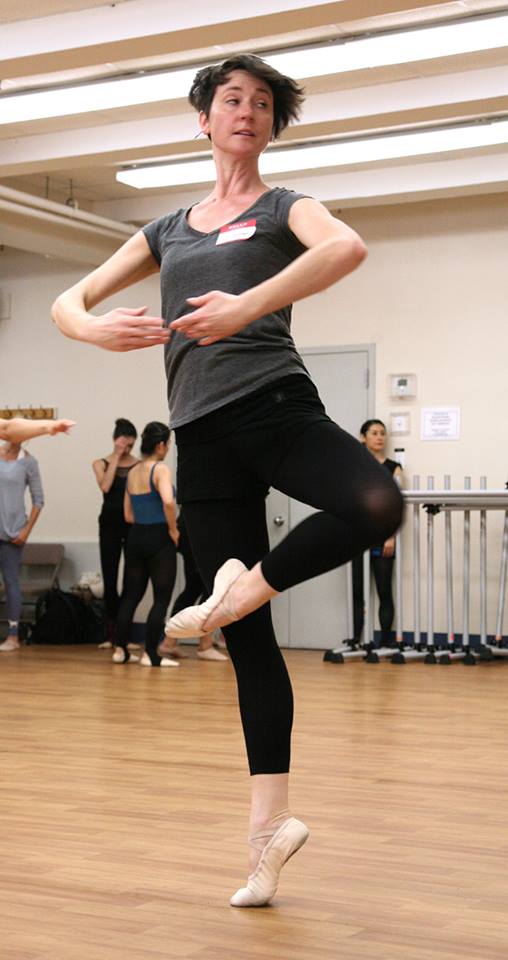
More about practicing the pirouette en dehors in promenade –
Remember that you always have a “back shoulder.” You can’t have both shoulders moving in the same direction at the same time, because this puts too much weight on one side of your body. It will make you lose your balance. Even though you will be bringing your left arm to first position as you promenade and turn, you must not move your left shoulder forward. You must keep your left shoulder “back” and over your left toes.
Sometimes I describe this as “the rule of one”—when turning, you should only move one shoulder or arm at a time. In this case, first you move your left shoulder and arm back as you lower into plié and then you move your right shoulder and arm back as you turn the plié.
Think of it this way: first you move this shoulder, and then you move the other. Only move one shoulder at a time.
Excerpted from my book “The Finis Jhung Ballet Technique: A Guide for Teachers & Students”
https://finisjhung.com/shop/guidebook/
Pictured: Belle McDonagh of The Elancé Adult Ballet School, Victoria, AU at the FJ Teacher Workshop 2015 (photo by Stephen von der Launitz)
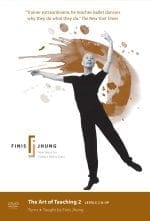
 Practice the pirouette en dehors slowly with a promenade:
Practice the pirouette en dehors slowly with a promenade:
It requires a great deal of patience to teach students to go to “the end of the plié,” but in the end, it’ll be worth it. As I tell my students, “You either know how to turn, or you don’t—it’s not the weather, it’s not the music, it’s not what you’re wearing or how you feel today: it’s you. You must learn to do your preparation correctly!”
I want to point out that although you begin this preparation facing the mirror in a fourth position, when you turn to “the end of the plié,” you will arrive in a second position on the diagonal (écarté) with your weight over your front foot—with your left arm and knee pointing to corner 8 and your right arm and knee pointing to corner 4.
Your feet have changed from fourth to second; therefore, your arms must also change from fourth to second. Having your arms reaching out in second helps you to balance the final moments of the plié.
Turning your right shoulder and arm to the back while keeping your left arm and shoulder in place marks the crucial moment. Will you see and make “the end of the plié” with both arms stretched open? Your arms must allow your feet and legs to get to “the end of the plié.” Pulling your arms into the finished position before you complete the plié will pull your weight up and away from your supporting toes and put you off balance. This is what makes those dancers we mentioned earlier look like they’re dancing “on top of the floor.”
In fact, this is one of the clues you look for when studying your turns in the mirror. If you are in plié, your arms can’t be closing. Your arms do what your legs do. If both legs are apart and open, so are your arms.
After you see “the end of the plié,” push the floor with both feet, bring your free foot to your knee, your arms to first position, and complete the promenade to the front.
If you make sure that you look for “the end of the plié” each time you turn, then you won’t develop the bad habit of completing your arm movements faster than you can complete your plié preparation.
(Excerpt from my book “The Finis Jhung Ballet Technique: A Guide for Teachers & Students.”)
 This exercise is shown and explained in my video “The Art of Teaching Turns” https://finisjhung.com/shop/the-art-of-teaching-turns/
This exercise is shown and explained in my video “The Art of Teaching Turns” https://finisjhung.com/shop/the-art-of-teaching-turns/
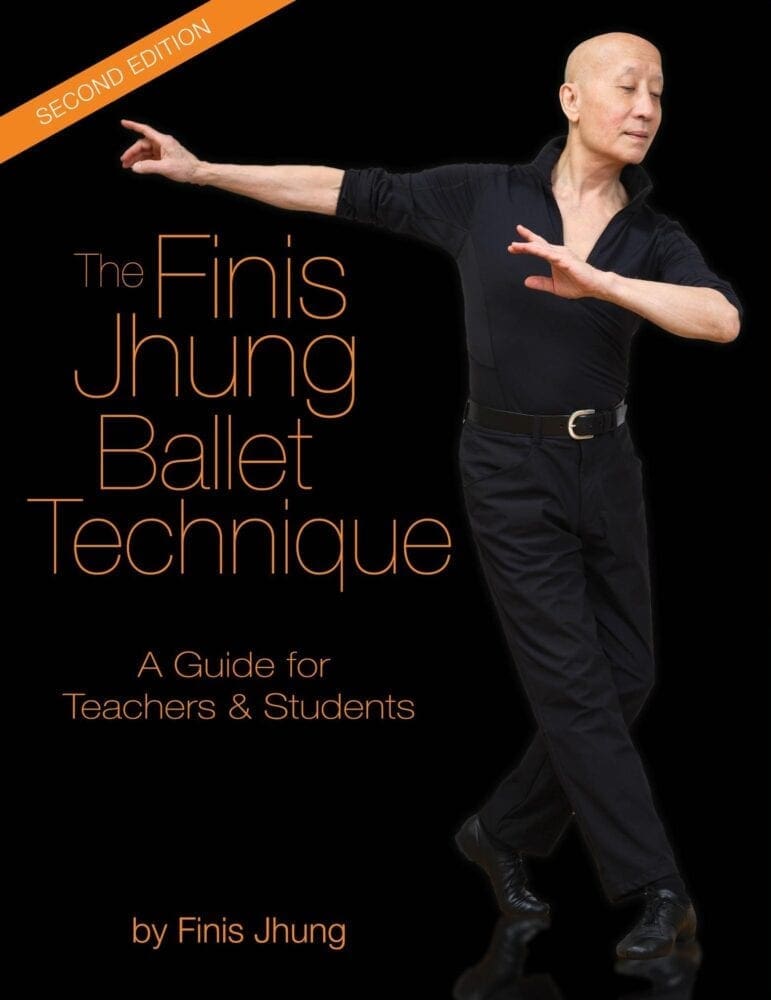
In almost every class I teach, I find myself reminding my students “Don’t be in such a hurry to fall over,” or “Remember, you can’t turn faster than you can fall!”
What I mean is that they should slow down the closing of their arms and make sure that they go to “the end of the plié.” If students don’t know how to make an almost-isometric plié, their feet and legs are relaxed. Not having a muscular connection from the supporting toe to the supporting hip, students are forced to pull up out of the plié. They lift their bodies up by pulling their arms in. They depend on the inward closing movement of the supporting arm. When I see students do this, they look very tense and appear to be dancing “on top of the floor.” They look like they’re following their arms, because all of their energy and weight is in their arms instead of in their supporting legs and feet.
Excerpted from my book “The Finis Jhung Ballet Technique: A Guide for Teachers & Students”

Every movement you make should be powered by the action of your feet (or foot). In terms of preparing for the pirouette en dehors from the fourth position, keep the following in mind:
 Excerpted from my book The Finis Jhung Ballet Technique: A Guide for Teachers & Students
Excerpted from my book The Finis Jhung Ballet Technique: A Guide for Teachers & Students